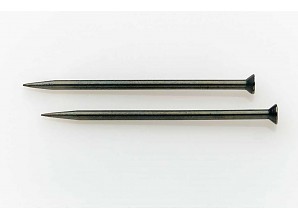First you need to watch this video.
We always try to fix things. It’s in our nature. When you’re coaching you are listening to people and sometimes you wonder why people do not see things as clear as you do. The solution seems to be right in front of them and they seem not to get it. As a coach you could decide to take matters into your own hands, tell the coachee what the problem really is and propose the only obvious solution. When you do so, you are not coaching.
Coaching is about creating awareness, fostering a sense of responsibility and enabling action. But it’s the coachee that has to be aware, take responsibility and make decisions. Any intervention from the coach that reduces any of these outcomes, reduces the impact of coaching. Telling a coachee what to do, is reducing his or her responsibility.
So even when you know that it’s about the nail, it’s the coachee that should decide if it really is about the nail. And even if you think pulling out the nail is the only solution, it’s the coachee that will decide that this is the action to be taken.
This is hard. As a coach you might feel as if you are powerless. It does not seem to be very efficient. However, your role as coach is not about the content. It’s about the process. You are fully responsible to do whatever it takes to enable awaress, responsibility and action. And your tools are listening, asking questions and confronting. Nothing more, nothing less.
It’s not about the nail. It’s about the coachee.
Uncategorized






Coaching is in fact an application of the Crucial Dialogue Model based on Creative Interchange. And surely, it’s beyond the ‘quick fix’.
First of all the problem has to be appreciatively understood by … the coachee. The coach uses the tools of the model, by asking the core questions and listening to the coachee at a deep level.
In the first phase ‘communication’ the coach must put inquiry at a higher level than advocacy. And even his ‘advocacy’ as to be done by using the right question. During that phase he surely observes the non-vocal communication signs which he uses in the most needed tool in that phase: ‘confiremed paraphrasing’.
The second phase ‘appreciation’ means appreciating by the coachee of the communicated ‘problem’, that ultimately the coachee will have to fix. Here one should be aware of the ‘jump to conclusion’ trap. First the problem should be deeply understood before it can be solved. Therefor the coach ask the right questions and will help the coachee to understand his mental model and to understand that other mental models give possible a different appreciation. The coach is a guide of the coachee so that the latter can really understand AND appreciate the problem. The coach should also be aware of the possibility that so-called the ‘obvious’ realty is a problem of the quality of his sight. Sometimes he should be remembered of Mathew 7:5 : “First get rid of the log in your own eye; then you will see well enough to deal with the speck in your friend’s eye.”
The first two phases have also to do with the two sorts of consciousness: the clear consciousness in phase one, also called awareness, thus the creating of awareness and the colored consciousness, mostly called consciousness. Those two phases will lead to a good appreciation of the problem at hand. Then the role of the coach is to help the Coachee to understand that he is the ‘owner’ of the problem, so he fosters a sense of responsibility.
The phases three and four will solve the problem. Phase three is ‘imagination’ of the possible solutions (creation) and phase four ‘transformation’ is the execution of chosen solutions real (innovation). The coachee has to make the decisions and has to enable action.
I agree: a) the coachee that has to be aware, take responsibility and make decisions and b) the role of the coach is not about the content it’s about the process; the Creative Interchange process!